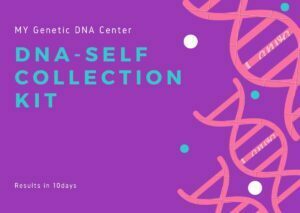ALLERGY: DRUGS ANTIBIOTICS; 28 DRUGS
If a patient is allergic to specific antibiotics, healthcare professionals typically conduct an allergy testing process. This involves a detailed review of the patient’s medical history, focusing on any previous reactions to medications.
What are the signs that I might be allergic to an antibiotic?
An allergic reaction to an antibiotic can present through a variety of symptoms, ranging from mild to severe. Common signs include skin-related issues such as rashes, itching, or hives, which may appear shortly after taking the medication. Some individuals might experience swelling, particularly around the face, lips, tongue, or throat, which can interfere with breathing or swallowing. Other symptoms can include coughing, wheezing, nasal congestion, or shortness of breath.
Which antibiotics are most likely to cause allergic reactions?
Some antibiotics more commonly cause allergic reactions than others. Among these, penicillin and other beta-lactam antibiotics (such as amoxicillin, ampicillin, and cephalosporins) are the most frequent triggers. These drugs can cause reactions ranging from mild skin rashes to severe anaphylaxis.
How soon after taking an antibiotic do allergy symptoms usually appear?
Allergy symptoms from antibiotics can appear at different times depending on the individual’s immune response. In many cases, symptoms may develop within minutes to a few hours after taking the medication, especially in more immediate reactions like hives, swelling, or difficulty breathing.
What should I do if I suspect I’m allergic to an antibiotic?
If you suspect that you’re having an allergic reaction to an antibiotic, it’s important to stop taking the medication immediately and contact your doctor or healthcare provider. Describe all the symptoms you are experiencing, including when they started and how severe they are.
Are there tests to confirm if I’m allergic to certain antibiotics?
Yes, there are specific tests that can help determine if you are allergic to certain antibiotics. One of the most common methods is a skin test, particularly used for penicillin and related drugs.
How do I know if it’s a side effect or an actual allergy?
A side effect is a known, often predictable reaction to a drug that occurs as part of its normal action—such as nausea, diarrhea, or headache—and typically doesn’t involve the immune system.
An allergic reaction, on the other hand, is an immune system response where the body mistakenly identifies the antibiotic as harmful. Allergic reactions may include symptoms like hives, itching, swelling, difficulty breathing, or anaphylaxis.
Are antibiotic allergies genetic or inherited?
Antibiotic allergies are not directly inherited in the same way as traits like eye color or blood type, but genetics can play a role in how a person responds to certain medications.
If a close family member, such as a parent or sibling, has a history of drug allergies, it may indicate a higher likelihood of sensitivity or allergic tendencies, although this doesn’t guarantee that others in the family will have the same reaction. In many cases, allergic reactions are influenced by a combination of genetic, environmental, and immune system factors.
Do over-the-counter antibiotics cause allergic reactions too?
Yes, over-the-counter (OTC) antibiotics can also cause allergic reactions, although such medications are limited in availability in many countries due to the potential risks. Topical antibiotics, such as creams or ointments containing ingredients like neomycin, bacitracin, or polymyxin B, are commonly available without a prescription and are used to treat minor skin infections or wounds.
Is there a list of the 28 antibiotics that are commonly known to trigger allergies?
Yes, there is a group of antibiotics that are more frequently associated with allergic reactions, and many healthcare providers monitor around 28 of these closely due to their potential to cause sensitivity in some individuals. While reactions can vary from person to person.
🧬 Antibiotics Commonly Associated with Allergic Reactions:
Some antibiotics are more likely than others to cause allergic reactions in sensitive individuals. Healthcare professionals often keep close watch on a group of 28 specific antibiotics due to their higher association with allergic responses. It’s important to remember that individual reactions can vary widely.
📋 List of 28 Antibiotics Known to Trigger Allergies:
- Penicillin : One of the oldest antibiotics, primarily used to treat bacterial infections like strep throat and syphilis.
- Amoxicillin : A widely used penicillin-type antibiotic effective against respiratory and ear infections.
- Ampicillin : Commonly prescribed for urinary, respiratory, and gastrointestinal tract infections.
- Oxacillin : Designed to combat penicillinase-producing staphylococcal infections.
- Cloxacillin : Used mainly to treat infections caused by penicillin-resistant staphylococci.
- Nafcillin : Effective against serious staph infections that are resistant to regular penicillin.
- Piperacillin : Often combined with tazobactam to treat hospital-acquired infections and sepsis.
- Ticarcillin : Previously used for gram-negative bacterial infections, especially in urinary and respiratory systems.
- Cefalexin (Cephalexin) : A first-generation cephalosporin for skin, bone, and urinary tract infections.
- Cefuroxime : A second-generation cephalosporin often used to treat bronchitis and sinus infections.
- Ceftriaxone : A third-generation cephalosporin given by injection for severe bacterial infections.
- Cefotaxime : Used for a variety of serious infections, including bacterial meningitis and pneumonia.
- Cefepime : A fourth-generation cephalosporin effective against a broad range of bacteria.
- Cefazolin : Commonly used before and after surgeries to prevent bacterial infections.
- Sulfamethoxazole-trimethoprim (Co-trimoxazole) : A combination antibiotic used for urinary tract infections and certain types of pneumonia.
- Erythromycin : A macrolide antibiotic useful for patients allergic to penicillin and for treating respiratory infections.
- Clarithromycin : Effective against H. pylori and used in combination therapy for stomach ulcers.
- Azithromycin : Known for its long-lasting action, often used for bronchitis, pneumonia, and STIs.
- Ciprofloxacin : A fluoroquinolone antibiotic used for a range of infections, including those affecting the bones and joints.
- Levofloxacin : A broad-spectrum antibiotic often prescribed for sinusitis and chronic bronchitis.
- Moxifloxacin : Typically used to treat more resistant strains of bacteria in respiratory infections.
- Tetracycline : An older antibiotic used to treat acne, cholera, and tick-borne diseases.
- Doxycycline : Preferred for conditions like Lyme disease, malaria prevention, and acne.
- Minocycline : A tetracycline-class drug often used for skin infections and acne treatment.
- Clindamycin : Used to treat serious infections caused by anaerobic bacteria and some protozoa.
- Vancomycin : Reserved for severe infections, including MRSA and C. difficile-related colitis.
- Metronidazole : Effective against anaerobic bacteria and parasites; commonly used for dental and gastrointestinal infections.
- Linezolid : A newer antibiotic effective against drug-resistant bacteria, including MRSA and VRE.
These antibiotics belong to different classes such as beta-lactams (penicillins and cephalosporins), sulfonamides, macrolides, fluoroquinolones, tetracyclines, and others. While many people use these medications without issues, those with a history of drug allergies should always inform their healthcare provider before taking any new antibiotic.




